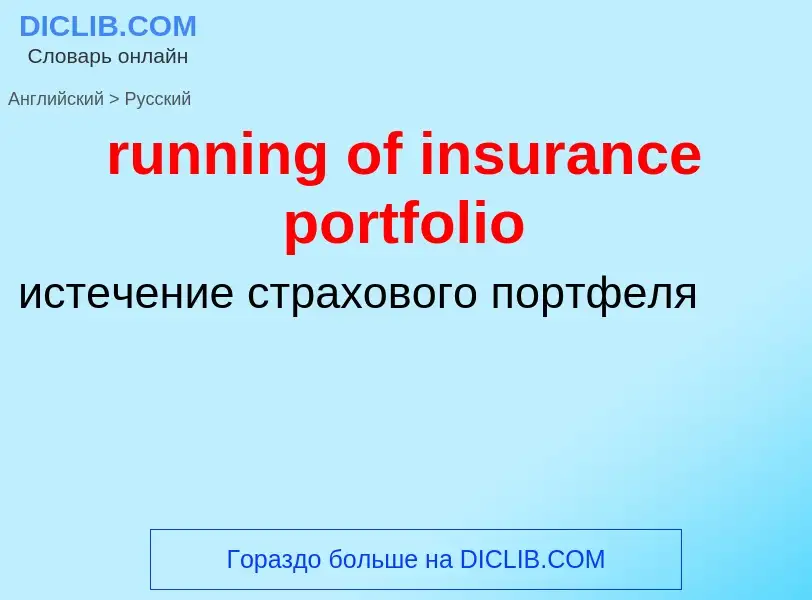Translation and analysis of words by ChatGPT artificial intelligence
On this page you can get a detailed analysis of a word or phrase, produced by the best artificial intelligence technology to date:
- how the word is used
- frequency of use
- it is used more often in oral or written speech
- word translation options
- usage examples (several phrases with translation)
- etymology
running of insurance portfolio - translation to russian
общая лексика
портфель ценных бумаг (банка и т. п.)
Definition
.
Wikipedia

Constant proportion portfolio investment (CPPI) is a trading strategy that allows an investor to maintain an exposure to the upside potential of a risky asset while providing a capital guarantee against downside risk. The outcome of the CPPI strategy is somewhat similar to that of buying a call option, but does not use option contracts. Thus CPPI is sometimes referred to as a convex strategy, as opposed to a "concave strategy" like constant mix.
CPPI products on a variety of risky assets have been sold by financial institutions, including equity indices and credit default swap indices. Constant proportion portfolio insurance (CPPI) was first studied by Perold (1986) for fixed-income instruments and by Black and Jones (1987), Black and Rouhani (1989), and Black and Perold for equity instruments.
In order to guarantee the capital invested, the seller of portfolio insurance maintains a position in a treasury bonds or liquid monetary instruments, together with a leveraged position in an "active asset", which constitutes the performance engine. Examples of risky assets are a basket of equity shares or a basket of mutual funds across various asset classes. While in the case of a bond+call, the client would only get the remaining proceeds (or initial cushion) invested in an option, bought once and for all, the CPPI provides leverage through a multiplier. This multiplier is set to 100 divided by the crash size (as a percentage) that is being insured against.
For example, say an investor has a $100 portfolio, a floor of $90 (price of the bond to guarantee his $100 at maturity) and a multiplier of 5 (ensuring protection against a drop of at most 20% before rebalancing the portfolio). Then on day one, the writer will allocate (5 * ($100 – $90)) = $50 to the risky asset and the remaining $50 to the riskless asset (the bond). The exposure will be revised as the portfolio value changes, i.e., when the risky asset performs and with leverage multiplies by 5 the performance (or vice versa). Same with the bond. These rules are predefined and agreed once and for all during the life of the product. The allocation to the risky asset may vary during the life of the product. In case the active asset performance is negative, the values of the active asset and the CPPI strategy will decrease, and as a result the allocation of the strategy to the active asset will decrease. Should the exposure to the risky asset drop to zero or a very low level, then the CPPI is said to be deleveraged or cashed out. The CPPI strategy will then be fully allocated to the low risk asset until the product matures.
CPPI strategies aim at offering a capital protection to its investors. Compared to a bond + call strategy, the drawback of the CPPI is that it follows a buy high sell low strategy. Volatility will hurt the performance of the investment, and once the strategy has deleveraged, it never recovers and the investors have to wait until maturity to receive their initial investments. The benefit is that CPPI protection is much cheaper and less impacted by market movements.
A variation of CPPI is the so-called Time Invariant Portfolio Protection Strategy (TIPP) where the capital is (partially) protected continuously (typically on a daily basis) as opposed to a protection at a fixed date in the future.


